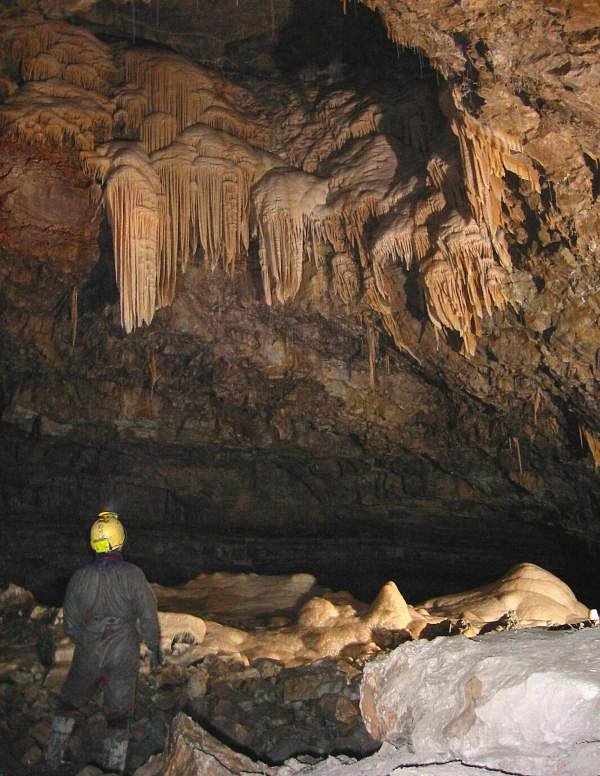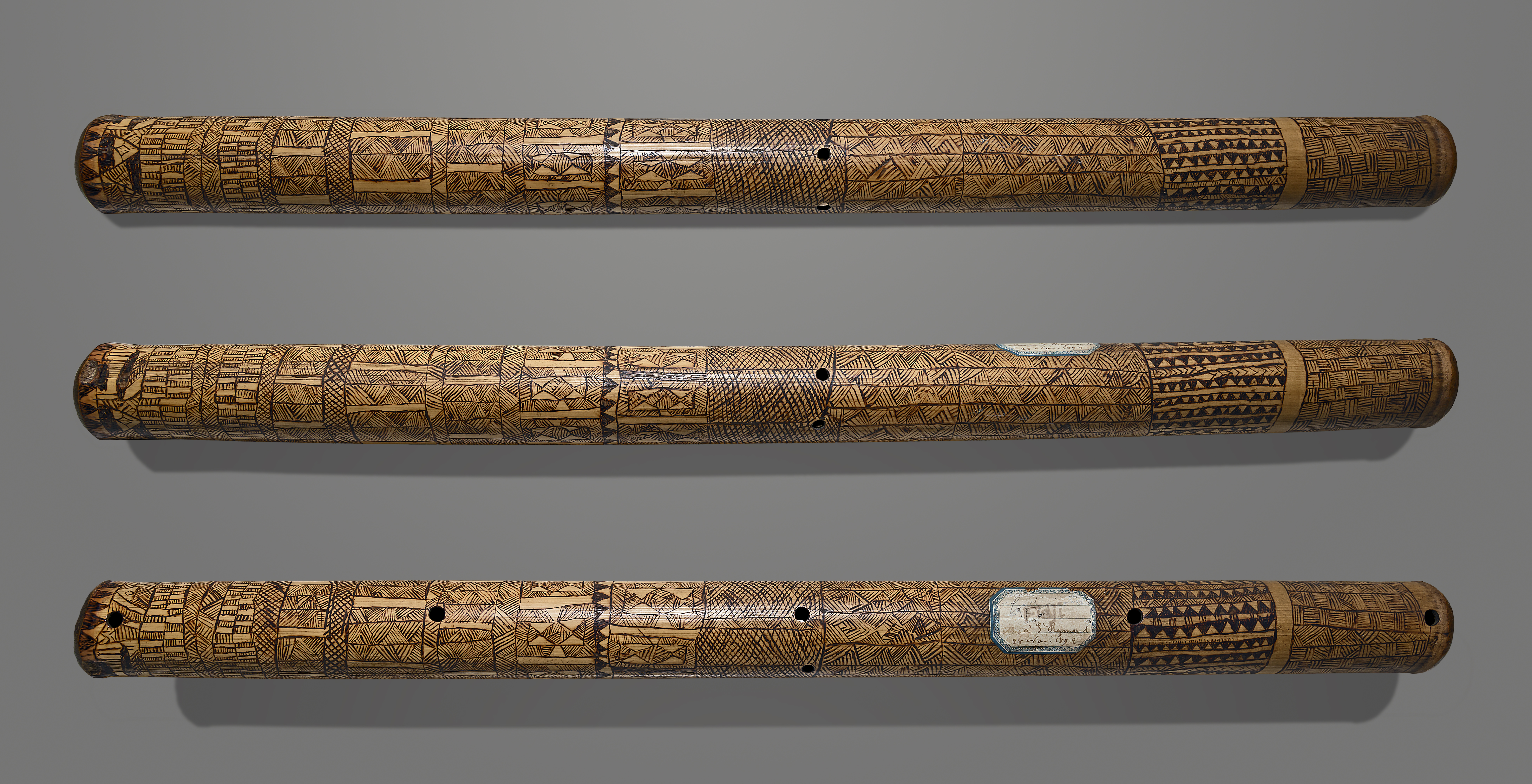|
Cave Of The Trois-Frères
The Cave of the Trois-Frères is a cave in southwestern France famous for its cave paintings. It is located in Montesquieu-Avantès, in the Ariège ''département''. The cave is named for three brothers (french: trois frères), Max, Jacques, and Louis Begouën, who, along with their father Comte , discovered it in 1914. The drawings of the cave were made famous in the publications of the Abbé Henri Breuil. The cave art appears to date to approximately 13,000 BC. Artwork One of the paintings, known as "The Sorcerer", is the "most famous and enigmatic human figure" with the features of several different animals, whose exact characteristics remain a matter of debate. Engravings featuring what appear to be several birds and a cave cricket were found on a fragment of bison bone at the junction of Trois-Frères with the Grotte d'Enlène. The grasshopper was portrayed with such fidelity that the insect's species has been determined. It is thought to be the earliest known rep ... [...More Info...] [...Related Items...] OR: [Wikipedia] [Google] [Baidu] |
Montesquieu-Avantès
Montesquieu-Avantès () is a commune in the Ariège department in southwestern France. History Montesquieu-Avantès has a significant prehistory in the Pyrenees. The cave-complex was carved out by the Volp River resulting in three extensive caverns: , Trois-Frères and Tuc d'Audoubert. They were discovered by the Begouën children on 10 October 1912. The caves contain unique works of art. The Salle des Bisons features two masterfully modelled bison, which were sculpted in clay with a stone spatula-like tool 17,000 years ago and show the imprint of the artist's fingers. The pair are among the largest and finest surviving prehistoric sculptures. Occupied in the Upper Palaeolithic, notably during the Magdalenian Epoch, the caves have been extensively studied. These works on Tuc d'Audoubert were compiled in 2009 in a monograph entitled "The Secret Sanctuary of the Bison". A subsequent book entitled "The Cave of the Three Brothers" ("La Caverne des Trois-Frères"). docume ... [...More Info...] [...Related Items...] OR: [Wikipedia] [Google] [Baidu] |
The Sorcerer (cave Art)
The Sorcerer is one name for an enigmatic cave painting found in the cavern known as 'The Sanctuary' at the Cave of the Trois-Frères, Ariège, France, made around 13,000 BCE. The figure's significance is unknown, but it is usually interpreted as some kind of great spirit or master of animals. The unusual nature of The Sanctuary's decoration may also reflect the practice of magical ceremonies in the chamber. In his sketches of the cave art, Henri Breuil drew a horned humanoid torso and the publication of this drawing in the 1920s influenced many subsequent theories about the figure. However, Breuil's sketch has also come under criticism in recent years. A single prominent human figure is unusual in the cave paintings of the Upper Paleolithic, where the great majority of representations are of animals. Breuil's drawing Henri Breuil asserted that the cave painting represented a shaman or magician — an interpretation which gives the image its name — and described the image he ... [...More Info...] [...Related Items...] OR: [Wikipedia] [Google] [Baidu] |
Caves Of Occitania (administrative Region)
A cave or cavern is a natural void in the ground, specifically a space large enough for a human to enter. Caves often form by the weathering of rock and often extend deep underground. The word ''cave'' can refer to smaller openings such as sea caves, rock shelters, and grottos, that extend a relatively short distance into the rock and they are called ''exogene'' caves. Caves which extend further underground than the opening is wide are called ''endogene'' caves. Speleology is the science of exploration and study of all aspects of caves and the cave environment. Visiting or exploring caves for recreation may be called ''caving'', ''potholing'', or ''spelunking''. Formation types The formation and development of caves is known as '' speleogenesis''; it can occur over the course of millions of years. Caves can range widely in size, and are formed by various geological processes. These may involve a combination of chemical processes, erosion by water, tectonic forces, microorgan ... [...More Info...] [...Related Items...] OR: [Wikipedia] [Google] [Baidu] |
Landforms Of Ariège (department)
A landform is a natural or anthropogenic land feature on the solid surface of the Earth or other planetary body. Landforms together make up a given terrain, and their arrangement in the landscape is known as topography. Landforms include hills, mountains, canyons, and valleys, as well as shoreline features such as bays, peninsulas, and seas, including submerged features such as mid-ocean ridges, volcanoes, and the great ocean basins. Physical characteristics Landforms are categorized by characteristic physical attributes such as elevation, slope, orientation, stratification, rock exposure and soil type. Gross physical features or landforms include intuitive elements such as berms, mounds, hills, ridges, cliffs, valleys, rivers, peninsulas, volcanoes, and numerous other structural and size-scaled (e.g. ponds vs. lakes, hills vs. mountains) elements including various kinds of inland and oceanic waterbodies and sub-surface features. Mountains, hills, plateaux, and plains are the fou ... [...More Info...] [...Related Items...] OR: [Wikipedia] [Google] [Baidu] |
Caves Containing Pictograms In France
A cave or cavern is a natural void in the ground, specifically a space large enough for a human to enter. Caves often form by the weathering of rock and often extend deep underground. The word ''cave'' can refer to smaller openings such as sea caves, rock shelters, and grottos, that extend a relatively short distance into the rock and they are called ''exogene'' caves. Caves which extend further underground than the opening is wide are called ''endogene'' caves. Speleology is the science of exploration and study of all aspects of caves and the cave environment. Visiting or exploring caves for recreation may be called ''caving'', ''potholing'', or ''spelunking''. Formation types The formation and development of caves is known as '' speleogenesis''; it can occur over the course of millions of years. Caves can range widely in size, and are formed by various geological processes. These may involve a combination of chemical processes, erosion by water, tectonic forces, microorganism ... [...More Info...] [...Related Items...] OR: [Wikipedia] [Google] [Baidu] |
Bison
Bison are large bovines in the genus ''Bison'' (Greek: "wild ox" (bison)) within the tribe Bovini. Two extant and numerous extinct species are recognised. Of the two surviving species, the American bison, ''B. bison'', found only in North America, is the more numerous. Although colloquially referred to as a buffalo in the United States and Canada, it is only distantly related to the true buffalo. The North American species is composed of two subspecies, the Plains bison, ''B. b. bison'', and the wood bison, ''B. b. athabascae'', which is the namesake of Wood Buffalo National Park in Canada. A third subspecies, the eastern bison (''B. b. pennsylvanicus'') is no longer considered a valid taxon, being a junior synonym of ''B. b. bison''. References to "woods bison" or "wood bison" from the eastern United States refer to this subspecies, not ''B. b. athabascae'', which was not found in the region. The European bison, ''B. bonasus'', or wisent, or zubr, or colloquially Euro ... [...More Info...] [...Related Items...] OR: [Wikipedia] [Google] [Baidu] |
San People
The San peoples (also Saan), or Bushmen, are members of various Khoe, Tuu, or Kxʼa-speaking indigenous hunter-gatherer cultures that are the first cultures of Southern Africa, and whose territories span Botswana, Namibia, Angola, Zambia, Zimbabwe, Lesotho and South Africa. In 2017, Botswana was home to approximately 63,500 San people (roughly 2.8% of the population) making it the country with the highest number of San people. Definition The term "San" has a long vowel and is spelled Sān (in Khoekhoegowab orthography). It is a Khoekhoe exonym with the meaning of "foragers" and was often used in a derogatory manner to describe nomadic, foraging people. Based on observation of lifestyle, this term has been applied to speakers of three distinct language families living between the Okavango River in Botswana and Etosha National Park in northwestern Namibia, extending up into southern Angola; central peoples of most of Namibia and Botswana, extending into Zambia and Z ... [...More Info...] [...Related Items...] OR: [Wikipedia] [Google] [Baidu] |
Tracking In Caves
Tracking in Caves is an international archaeology project focusing on reading and understanding human tracks in archaeological contexts. The project combines Western scientific approaches with the indigenous knowledge of present-day trackers from hunter-gatherer societies. Foundation Tracking in Caves was organized as a joint project by the African Archaeology (at the Institute of Prehistoric Archaeology, University of Cologne), the Neanderthal Museum, the Heinrich-Barth-Institute, the Nyae Nyae Conservancy, the Kalahari Peoples Fund and the Association Louis Bégouën. Financial support came from the German Research Foundation ''Deutsche Forschungsgemeinschaft''. The numerous human footprints still preserved in some rock art caves in southern France were the starting point of the project. These tracks date back to the last Ice Age and originated around 17,000 years ago. In contrast to the rock art, they have so far only been sparsely studied and with purely morphometric, "su ... [...More Info...] [...Related Items...] OR: [Wikipedia] [Google] [Baidu] |
Volp River
The Volp is a river of southwestern France. It is a right tributary of the Garonne, which it joins upstream of Cazères, Haute-Garonne. A flood in 1993 ruined a marginal amount of cropland. In 1912 ice-age cave paintings were discovered in a cave along the length of the Volp. See Trois Frères. Notable places along the river include: * Ariège: Sainte-Croix-Volvestre * Haute-Garonne: Le Plan Le Plan () is a commune in the Haute-Garonne department in southwestern France France (), officially the French Republic ( ), is a country primarily located in Western Europe. It also comprises of overseas regions and territories i ... References Rivers of France Rivers of Ariège (department) Rivers of Haute-Garonne Rivers of Occitania (administrative region) {{France-river-stub ... [...More Info...] [...Related Items...] OR: [Wikipedia] [Google] [Baidu] |
Phallus
A phallus is a penis (especially when erect), an object that resembles a penis, or a mimetic image of an erect penis. In art history a figure with an erect penis is described as ithyphallic. Any object that symbolically—or, more precisely, iconically—resembles a penis may also be referred to as a phallus; however, such objects are more often referred to as being phallic (as in "phallic symbol"). Such symbols often represent fertility and cultural implications that are associated with the male sexual organ, as well as the male orgasm. Etymology The term is a loanword from Latin ''phallus'', itself borrowed from Greek (''phallos''), which is ultimately a derivation from the Proto-Indo-European root *''bʰel''- "to inflate, swell". Compare with Old Norse (and modern Icelandic) ''boli'' " bull", Old English ''bulluc'' " bullock", Greek " whale". Archaeology The Hohle phallus, a 28,000-year-old siltstone phallus discovered in the Hohle Fels cave and reassembled ... [...More Info...] [...Related Items...] OR: [Wikipedia] [Google] [Baidu] |
Nose-flute
The nose flute is a musical instrument often played in Polynesia and the Pacific Rim countries. Other versions are found in Africa. Hawaii In the North Pacific, in the Hawaiian islands the nose flute was a common courting instrument. In Hawaiian, it is variously called ''hano'', "nose flute", by the more specific term ''ʻohe hano ihu'', "bamboo flute ornose," or ''ʻohe hanu ihu'', "bamboo ornose breath". It is made from a single bamboo section. According to ''Arts and Crafts of Hawai`i'' by Te Rangi Hiroa, old flutes in the Bishop Museum collection have a hole at the nose area for the breath, and two or three fingering holes. In the three-finger-hole specimen, one fingering hole is placed near the breath hole. Lengths range from . Oral tradition in various families states that numbers of fingering holes ranged from one to four, and location of the holes varied depending on the musical taste of the player. Though primarily a courting instrument played privately and for p ... [...More Info...] [...Related Items...] OR: [Wikipedia] [Google] [Baidu] |

.jpg)




